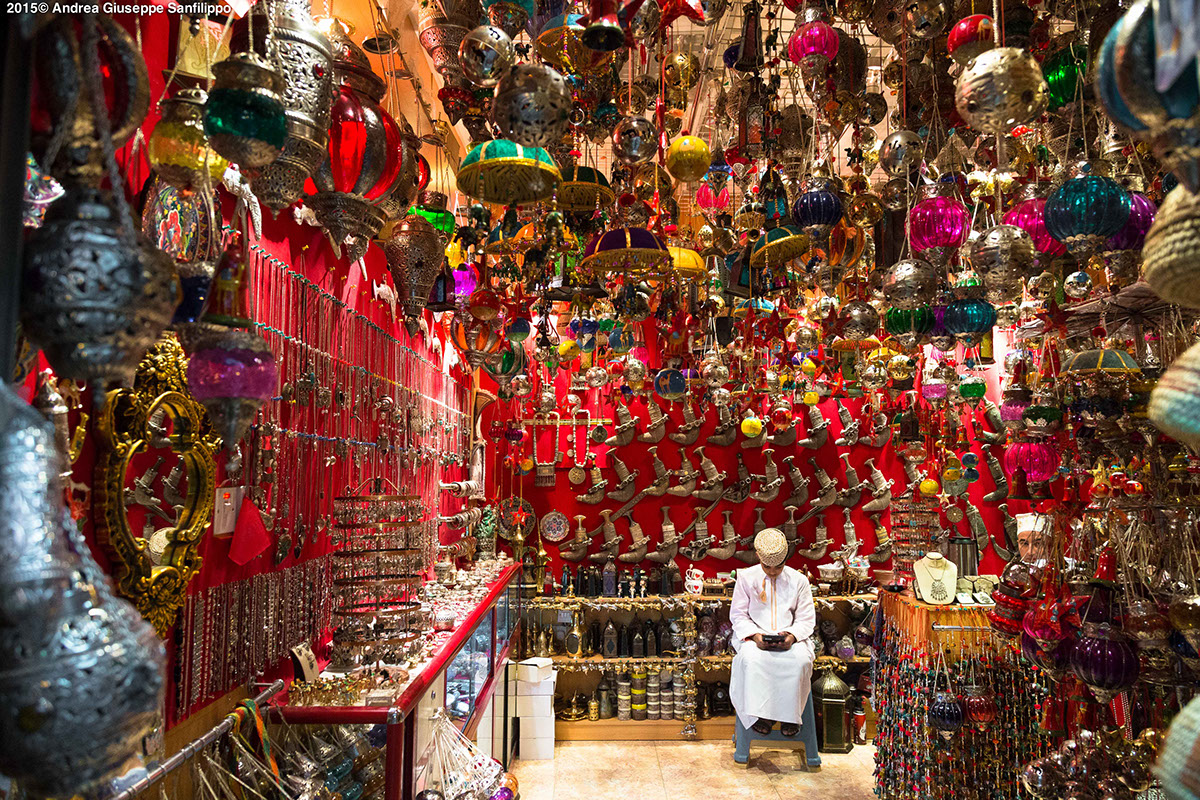A Tale of Modern Oman
Modern Oman (Sultanate of Oman) is a country of many riches that met a rapid growth in the last decades thanks to the guidance of the sultan Qaboos bin Said al Said (absolute monarch), reputed "illuminated" by many Omanis. In a few decades the country opened itself up and together with wealth, also western influences came in. Now the country is a pot-pourry of old values and lifestyles (fishery, farming) linked to the traditional way of living, and modern lifestyle brought by commerce and technology. At the same time, whilst many Omanis have access to status symbols (as evident from the plenty of high end -perfectly and constantly cleaned- land rovers and jewellery), a class of poorer workers is emerged, represented by an immense immigration from India, Pakistan, and Bangladesh.

The Student

A man hurrying for the evening praying time.

Sultan Qaboos bin Said al Said (absolute monarch), reputed "illuminated" by many Omanis

Wealth abound in Oman, and is represented by modern high-end land rovers (constantly washed) and jewellery.

Fashion has still asian and arabian influences and colors are stunning.

In the Muscat old suq. Woman dresses in the traditional way (black veil) that cover the colorful garments.

Moder malls are now built in remote and semi-desertic villages (Musandam peninsule in this specific case), who still are linked to traditional way of living (fishing and farming)

Expensive land rovers often replace traditional bedouins' means of transport even in the desert (Sharqiya Sands).

Omanis are excited by world leading sports as soccer. Here a team is playing in the outskits of Muscat. Suddendly the praying time came, and they rushed to the mosque.

Youngsters enjoy barbeque in the Wadi Shab canyon and relax with friends.

Camels and goats are the traditional animals as shown in this ancient rocky scuplture. Many fish fossils can also be found on the top of the moutnain (Jebel Harim, Musandam).

Goats represent an important animal for Omanis communities in remote areas.

Old market in Seeb.

Fishing is a leading industry in Oman, and many immigrants take part to it.

Indian immigrant working at a fuel station in southern Oman, working since 25 years. His wife and children are still in India.

Immigrant from the Madras region in India working since 8 years in Oman. Wife and children are at home in Indian and are financially supported by him, but he is able to spend 2 months a year with his family, in India.

Pakistani Immigrant involved in the textile commerce (women clothes).

Beluchi immigrants working in the textile industry at night.

Mournful immigrant looking at the indian ocean. Many immigrants spent 10 to 12 months in Oman, far away from their partners and children, in many cases up to 30 years. Most of them aim at going back to live in their own country after a long period in Oman.

A large ship leaving the Muscat harbour towards the Indian Ocean.

